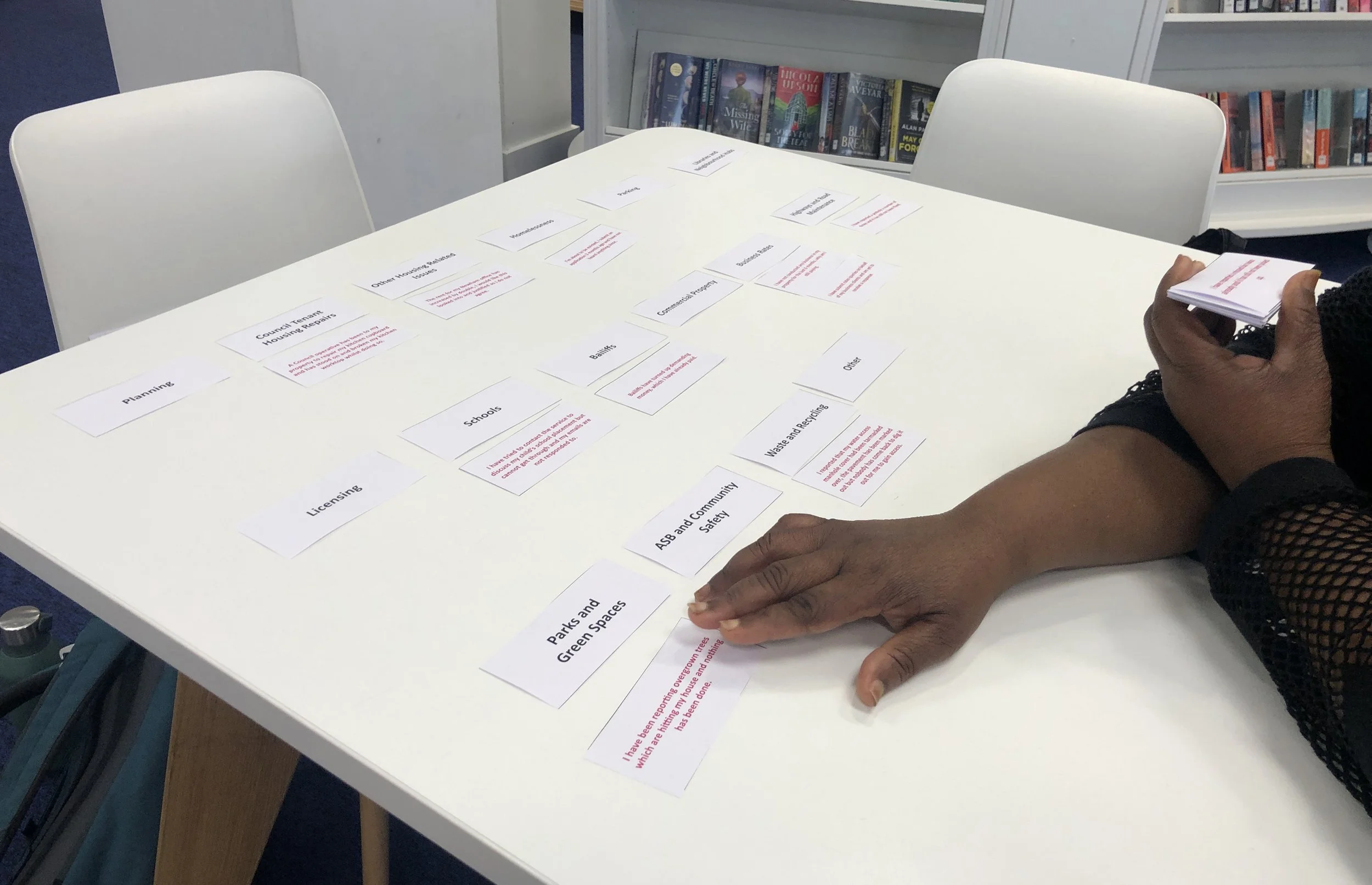Redesigning a Newham Council's complaints service
Newham Council were going through a significant redesign of their complaints and enquiries service. They were looking for support to design three key parts of the new service; the front-door, an internal triage process and the responses back to residents.
This project was delivered in partnership with Newham Council’s internal service design team and the complaints and enquiries service staff, with particular thanks to Katie Brunger, Henrietta Curzon, John Stroud and Heather Mcdonald.

Designing an end-to-end service.
We were commissioned to design three key parts of the service. This work was part of the full redesign of the service model and end to end service that was being led by Newham’s internal service design team, in collaboration with the complaints and enquiries team.
The internal service design team had completed a discovery and design phase and the new service model had been agreed for implementation. A wide range of new ways of working needed to be designed and a re-structure was required to deliver the model. At the time we began work, staff had just been through the process of being interviewed for roles. It was important to approach this work with care and consideration with a focus on building a trusted partnership between the service design team and the complaints and enquiries team.
Redesigning the front-door.
The front-door of any council service is an important touchpoint that helps users orient themselves, understand the service they are about to use and set their expectations.
For this project we worked with a small cohort of residents and carried out three rounds of engagement. We started by undertaking remote in-depth interviews to better understand their experiences of using the service with particular focus on the front-door and the responses they received.
This research helped us focus our work on the front-door around a redesign of key pages on the Newham Council website. We ran an in-person design workshop with the cohort of residents to co-create the content on the new website pages, co-write an auto response and provide feedback into the design of an inclusive phone channel.
The new content was redesigned to:
Get residents to the right place first time with the aim of reducing the volume of service requests received as complaints
Help residents understand the process and associated timescales
Ensure residents are submitting the required information, evidence and consent (if required)
This work also highlighted the need to design an inclusive phone channel for residents to submit their complaint or enquiry if they are unable to use the digital channel. Newham Council is continuing work in this area.

Developing an internal triage process.
In the current service, complaints and enquiries were assigned based on the order in which they were received. The service was also experiencing high volumes of complaints and enquiries being mis-allocated which resulted in the need for re-allocation - a process that took away from the time available for investigation.
We worked with the complaints and enquiries service staff to develop a triage process. The aim of the triage process is not only to get the complaints and enquiries to the right person as quickly as possible to ensure best use of the time available, but also ensure that urgent cases are prioritised. We did this by making best use of their current IT systems to cut down manual processes, while designing specific checking and assessing activities before cases are assigned.
As a team we:
Implemented changes to the complaints submission form that allowed residents to select a relevant category for their complaint with the goal of directing complaints to service specific inboxes for sorting. This reduced the manual sorting required by the complaints team.
Agreed what steps a triage process should include to ensure each complaint or enquiry reached the right person as quickly as possible, then worked to develop each of these steps and who was responsible for which parts of the process to ensure efficient and accurate triage and allocation.
Agreed on a shared definition around prioritising for urgency and implemented processes for flagging urgent cases.
Developed process maps and guidance to ensure clarity across the team.
“Newham has successfully decreased the proportion of complaints upheld by the Ombudsman and are now one of the best performers in London in resolving upheld cases before they reach the Ombudsman. Through the wider project, £100k worth of savings have been made”.
- Henrietta Curzon (Head of Service Design & Insight, Newham Council) commenting on the impact of the wider programme of work of which Joy contributed to.
Redesigning templates and guidance for writing responses.
In the current service, Newham Council was seeing inconsistent quality across the responses sent to residents.
We worked with the complaints team to develop guidance for writing responses. This was based on a combination of best practice, their experience and wider Council standards.
We also worked with staff and residents to redesign the templates used by staff to structure their responses with a view to shifting the language used where necessary to being more human and empathetic while ensuring consistent quality across the board.
This work was undertaken with a view to reducing the levels of complaints escalations and ensuring there was a clear focus on resident experience.
The limitations of current systems.
Through this work Newham Council were clear on the limitations of their current technology and motivated to ensure the work we carried out together was future focused. While the changes we implemented as part of this work were limited by the functionality of their current website content management system and internal case management system, we worked to document ideal changes for if and when new systems were being considered.
